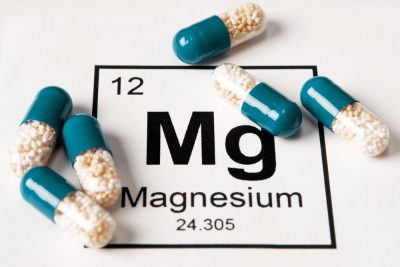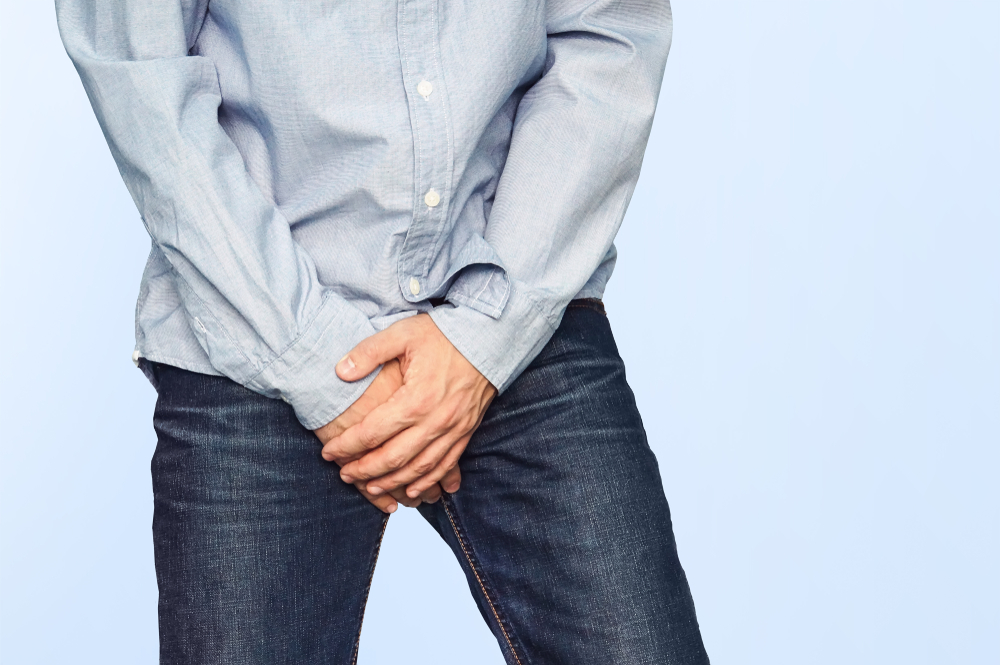Urinary incontinence in men can be prevented and managed, and Kegel exercise can be the answer.
What is Urinary Incontinence?
Urinary incontinence is a condition that progresses from gradual leaking of urine due to laughing or urine, to complete inability to hold urine. It is the loss of bladder control and can be a very embarrassing problem.
Urinary incontinence usually occurs when there is a malfunction with the muscles and nerves that control the bladder. It can be caused by:
- Obesity
- Urinary tract infections
- Obstruction in the urinary tract
- Nerve damage
- Loss of sphincter strength
Urinary incontinence can also be caused by several factors that aren’t due to underlying diseases like intense laughter, coughing, intoxication, or sneezing.
Although urinary incontinence is inevitable as you get older, for most people, a lifestyle change can ease the discomfort or stop urinary incontinence.
What is Kegel Exercise?
Kegel exercises are just exercises that help you strengthen your pelvic floor muscles, and this means no more bladder leakage. Kegel exercises support the uterus, small intestine, bladder, and rectum, plus it can also help you achieve better orgasms.
Kegel exercises can also be referred to as pelvic-floor exercises; that’s because it has to do with constant contracting and relaxing of the muscles that form part of the pelvic floor, and sometimes the pelvic floor is called “Kegel muscles.”
Kegel exercise is more like a pretense exercise, where you have to pretend as though you want to urinate, but you hold it back. You have to relax and find the right muscles that control urine flow, then you tighten and release repeatedly.
Kegel exercises affect sexual function, and with constant practice, you can do it effortlessly at any time.
Before beginning the process of starting Kegel exercises, you need first to find out where the correct muscles are located, and then understand the technique involved.
How to Identify the Right Muscles
When next you have to urinate, pretend as though you want to start, and then you stop. Observe the feeling of when the muscles in your penis, bladder, or anus get tight and move up.
These muscles are the pelvic muscles, and if you feel them tighten, then you are doing the right thing. However, be careful, so your buttock muscles, thighs, and abdomen are all relaxed, to get the exercise right.
If you still get the sensation that you aren’t tightening the right muscles then:
- Imagine you are firmly preventing yourself from trying to pass out gas.
- Insert one finger into your rectum and tighten the muscles, as though you are preventing your urine from flowing, and then let it go. By doing this, you should feel the right muscles tighten and move up and down.
How to Do Kegel Exercises
 Locate the right muscles
Locate the right muscles
Once you have identified the right muscles – pelvic floor muscles – you can do your exercise in any position. However, in the beginning stage, you might find it easier to do it while lying down.
Bring the element of perfection to your technique
Tighten and contract the pelvic floor muscles for about three seconds, and then relax for another three seconds. Try doing this repeatedly within a short time frame.
By the time you have noticed your muscles get stronger, proceed to do Kegel exercises while going for a stroll while sitting or standing. Continuously follow the process, and in no time, you would become a perfectionist.
Keep your focus uninterrupted
To get the best results, focus on tightening the right muscles, that’s only your pelvic floor muscles.
Be extremely conscious in order not to tighten the muscles in your thighs, abdomen, and buttocks; if not, you won’t feel the impact or get results from the exercise. Also, do not hold your breath; instead, breathe very freely when doing the exercises.
Repeat three times daily
Consistency is the key to getting noticeable results from Kegel exercises, so aim for ten times, three times a day – morning, afternoon, and night.
After about four weeks, you would feel a lot better and experience fewer symptoms. Still, keep on doing the exercise, but do not increase how many sets you do per day.
That’s because overdoing the Kegel exercise can lead to straining when you either want to move your bowels or urinate.
When doing the Kegel exercises, there are a few things to note:
- Once you have mastered and perfected your Kegel technique, do not practice it at the same time you are urinating, and even if you must, limit it to twice a month. Doing it regularly may lead to the weakening of the pelvic floor muscles and, over time, might cause severe damage to your bladder/kidneys.
- Kegel exercises are not painful or uncomfortable, so if you notice any discomfort, then maybe you aren’t doing it the right way.
- Incontinence may most likely return when you stop doing the Kegel exercise. So, once you start, you may need to do it forever.
- Keep in mind that it isn’t a magic solution; it may take a few months for your incontinence to reduce when you start doing these exercises.
The Right Time for Kegel Exercises
You have to make Kegel exercises a part of your daily routine; that way, you won’t feel complete about your day if you miss it. You should pick out a specific time and keep to it. For instance:
- Do a set of Kegel exercises in the morning, just before you brush your teeth.
- Do another set after you urinate, this is so you can get rid of the last few drops of urine
- Contract your pelvic floor muscles, right before you do any activity that adds pressure to your abdomen, like coughing and sneezing.
When to See a Doctor
It’s very okay to ask for help when you feel you aren’t getting your Kegel exercises right; there’s absolutely no shame in that. Your doctor or healthcare provider would be able to give you detailed feedback, so you can improve on your Kegel techniques and get it right.
You can also call your doctor when you have done the Kegel exercises for about a month, and you don’t notice any change. It may be as a result of you not locating the right muscles, and sometimes your doctor can refer you to a physical therapist that specializes in pelvic floor exercises.
There are cases where biofeedback training is just the best. In a biofeedback session, your doctor would insert a small probe into your rectum while you relax and control your pelvic floor muscles.
This process is measured and monitored by a monitor, and it displays your pelvic floor activity. However, research has shown that this process is more effective in treating fecal incontinence.
Benefits of Kegel Exercises
Kegel exercises strengthen the pelvic floor muscles that support the bladder. These groups of muscles are responsible for the normal flow of blood to the groin and are always active during sex.
Studies have shown that strengthening the pelvic muscles would improve sexual functions like orgasms and erections.
Kegel exercises are also recognized as a form of treatment for erectile dysfunction. Pelvic floor rehabilitation, which is a program of physiotherapists to teach men how to strengthen their muscles, results in erectile dysfunction improvement.
Can Kegel Exercises Improve Sexual Performance
Strengthening of the pelvic floors can improve your performance during sex in different ways:
Delayed Ejaculation
Kegel exercises train the pelvic floor muscles to react only when commanded. It’s very important to know the techniques if you want to use Kegel exercises for mainly this purpose, and your healthcare professional can guide you on that.
Improves erection’s hardness
Pelvic floor muscles aid in adequate blood flow to the groin, which is necessary for achieving harder erections.
Increases the number of orgasms
Kegel exercises strengthen the pelvic muscles, so this can increase the number of orgasms that men can experience.
You can also treat urinary incontinence by taking supplements.
Natural Supplements for Urinary Incontinence
Magnesium
 Magnesium plays an essential aspect in different functions in our bodies, nerve, and proper muscle function inclusive.
Magnesium plays an essential aspect in different functions in our bodies, nerve, and proper muscle function inclusive.
Doctors believe that it plays a major role in occasionally improving incontinence. Magnesium decreases the bladder muscle spasms, thereby enabling the bladder to be empty after urinating
A study showed that people who took magnesium twice a day did not wake up frequently at night to use to the bathroom, and they also showed significant improvement in their daytime bladder control issues.
Taking supplements with magnesium is advisable, but you should speak to your doctor, so it doesn’t interact with any current medication you are on. However, it’s safe to take it, if you aren’t on any medication.
Vitamin D
Vitamin D doesn’t just help with calcium absorption; it helps to strengthen and protect the immune system, heart health, and even bladder health.
A recent study showed that people who had normal vitamin D levels are less likely to have pelvic floor disorders.
There is a clear correlation between vitamin D and urinary issues in men, so an increase in the intake of vitamin D would lead to significant relief of urinary incontinence.
You don’t necessarily have to stay under the sun to get vitamin D; you can go for supplements with vitamin D3.








COMMENTS